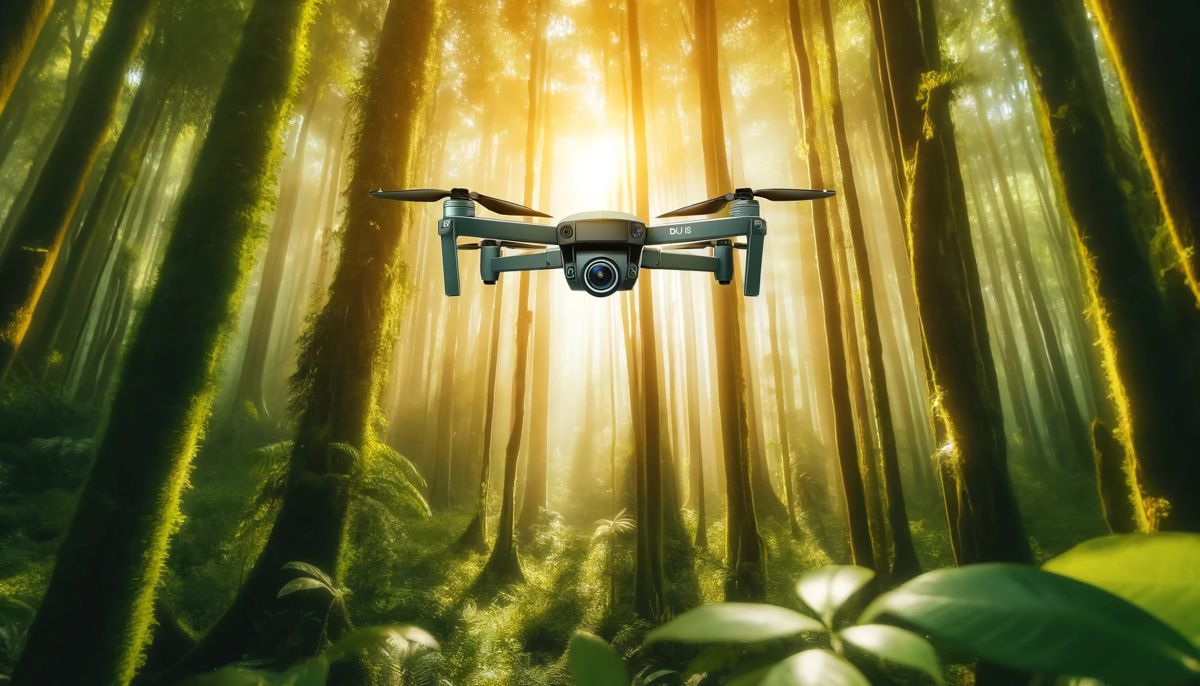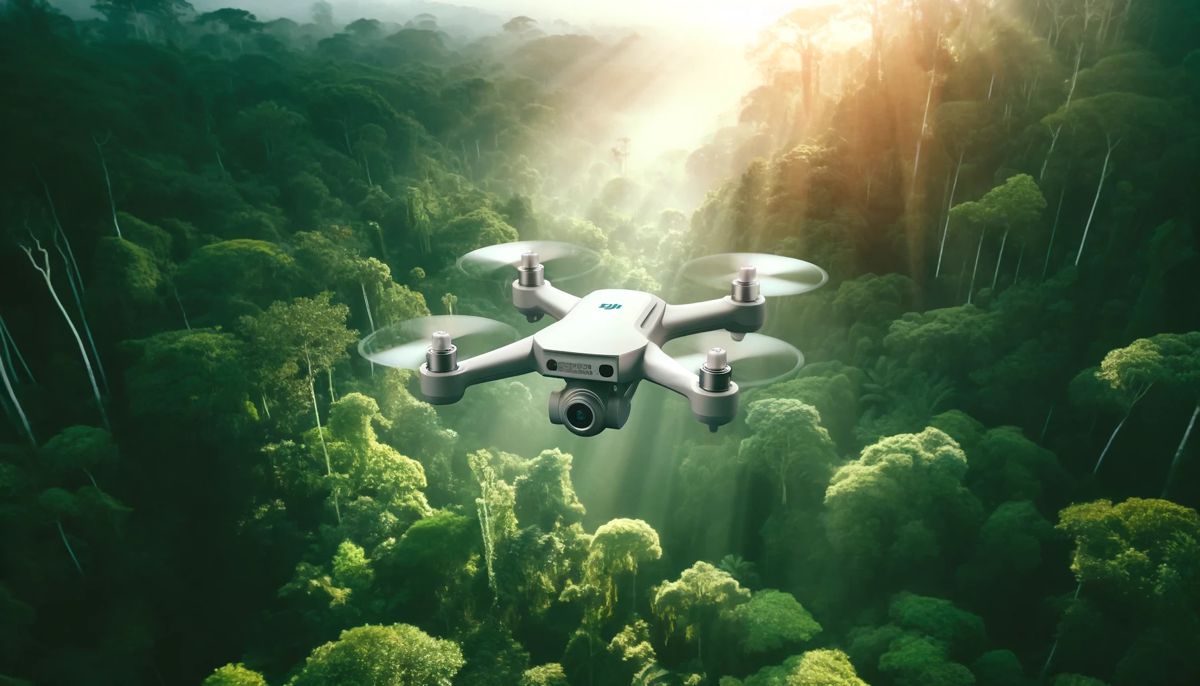Drone Technology is Transforming Biodiversity Research
In a bold leap forward for environmental conservation, DJI, the global leader in drone technology, has teamed up with ETH Zurich’s Environmental Robotics Lab and the environmental NGO Wilderness International to revolutionise how we monitor biodiversity.
The collaboration introduces an innovative approach to collecting environmental DNA (eDNA), with DJI’s advanced drones playing a starring role in what is shaping up to be a transformative chapter for biodiversity research. With the ability to access previously unreachable regions of forests and other sensitive ecosystems, this project promises to provide fresh insights into the complex web of life on our planet.
The Challenge of Biodiversity Monitoring
Monitoring biodiversity has always been a time-consuming and labour-intensive task. Traditional methods often involve sending researchers into hard-to-reach locations, spending weeks or even months collecting samples and data. This not only racks up expenses but also comes with considerable environmental impacts, especially when dealing with fragile ecosystems. Enter eDNA collection—a modern, minimally invasive technique that’s changing the game.
The idea is simple but ground-breaking: rather than trying to visually track and count species, scientists can now analyse the DNA that organisms leave behind in their environments, known as environmental DNA (eDNA). By examining this invisible genetic residue, researchers can detect the presence of species in a particular area without ever laying eyes on them. This method offers unprecedented opportunities to catalogue biodiversity in remote areas, particularly in dense, hard-to-navigate regions like the rainforests.

DJI’s Role in the Revolution
At the heart of this technological revolution is DJI’s Matrice drone, a high-performance, adaptable platform that’s been customised specifically for eDNA collection in this ground-breaking initiative. DJI’s drones are equipped with a cutting-edge robotic arm, designed by the team at ETH Zurich, which allows the drone to collect samples from treetops. These elevated areas are biodiversity hotspots, teeming with species, many of which are still unknown to science. Traditionally, accessing the canopy layer of rainforests has been a monumental challenge, often requiring climbers or helicopters to reach the top. But now, DJI’s drones are flying high, quite literally, to solve this problem.
Since the project’s inception in March 2024, the drones have successfully collected 36 samples from three locations within the Peruvian rainforest, areas under the careful stewardship of Wilderness International. These samples, once processed, provide a treasure trove of data, revealing species that inhabit the uppermost reaches of the forest, which have long been underexplored.
Why eDNA is a Game-Changer
The potential applications of eDNA sampling are vast, and the technique is proving to be a cost-effective, fast, and environmentally friendly alternative to traditional biodiversity monitoring. By using drones to access and sample biodiversity in inaccessible areas like rainforest canopies, scientists can gather crucial data without disrupting the habitats they seek to protect.
Moreover, the analysis of eDNA offers valuable insights into species diversity, population sizes, and ecosystem health. This new approach doesn’t just enhance our understanding of existing ecosystems; it also opens up the possibility of discovering new species and identifying key areas that may need protection.
As Kai Andersch, CEO of Wilderness International, aptly puts it: “Biodiversity monitoring via drone-based eDNA sampling and analysis is ground-breaking for Wilderness International’s conservation work. This methodology not only enhances our ability to monitor already protected areas but also promises to revolutionise the identification of new conservation areas, enabling us to protect primary forests more efficiently.”
The Power of Partnership
It’s no exaggeration to say that none of this would be possible without the commitment of several key partners. ETH Zurich is at the helm of developing the robotic arm technology that makes eDNA collection possible. Wilderness International provides on-the-ground support, identifying the best regions for sampling, while DJI supplies the high-tech drones that bring the project to life. The Audi Environmental Foundation also plays a critical role by funding project costs, making this breakthrough a reality.
What makes this project particularly exciting is its potential for global scalability. Although the pilot program is currently focused on the Peruvian rainforest, Wilderness International already has plans to extend this drone-based monitoring method to their conservation areas in Canada, a region where biodiversity data is still largely sparse. The hope is that by using these advanced tools, they can fill crucial knowledge gaps and provide actionable data to conservationists around the world.

A Holistic Approach to Conservation
One of the most exciting aspects of drone-based eDNA sampling is how it complements existing biodiversity monitoring methods. Fauna Forever, another research organisation involved in the project, is providing comparative data collected using conventional techniques. This two-pronged approach ensures that the new method is both reliable and robust. If successful, it could change the way conservationists approach biodiversity studies, combining the best of both worlds: traditional observation with high-tech innovation.
For policymakers, this presents an opportunity to reimagine how we approach conservation strategies. Accurate data is essential for making informed decisions about land use, species protection, and climate mitigation. With eDNA sampling now within reach, it offers the chance to make data-driven policies that better reflect the reality of our natural world.
Expanding the Horizons
Looking ahead, the future of biodiversity research seems brighter than ever. By making use of drone technology, environmental researchers can now collect more accurate data faster, and in ways that were previously unimaginable. There’s no doubt that this breakthrough in eDNA sampling will inspire other researchers and organisations to adopt similar techniques in various regions and ecosystems around the globe.
Whether in the dense rainforests of South America or the temperate wilderness of Canada, drone-based biodiversity monitoring offers a flexible, scalable solution that can be tailored to different environments. It provides a new lens through which we can better understand the intricate dynamics of ecosystems, while also helping to safeguard them for future generations.
A Brighter Future for Conservation
The combination of drone technology and eDNA collection is nothing short of revolutionary. As this pilot project progresses, it’s likely to shape the future of biodiversity research, offering a glimpse of what’s possible when cutting-edge technology meets environmental stewardship. The partnership between DJI, Wilderness International, and ETH Zurich exemplifies how collaboration between tech innovators and conservationists can yield results that benefit the planet.
And while the road ahead may still be filled with challenges, this project serves as a beacon of hope, demonstrating that when we harness technology for good, the possibilities are endless.




















